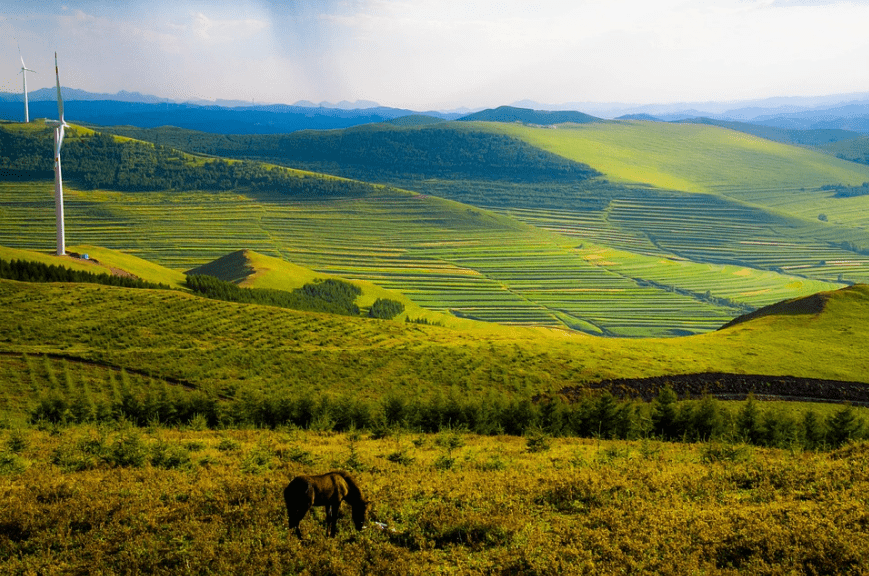Horses are herbivores that have a particular diet. Their food must be high in fiber to keep their long and sensitive digestive tract working. They should eat little and often, almost all day long.
Evaluating Body Condition
If you plan to raise a horse, you must know its diet, behavior, and the environment where it will grow healthy. Rhonda Hoffman, Ph.D., PAS, Dipl. ACAN, a horse science professor at the Middle Tennessee State University, said that the first step in crafting a horse’s diet is knowing whether the horse is healthy.
Horse growers and first-time owners must know the Henneke Body Condition scoring system that ranges from 1 (emaciated) to 9 (obese). A score of 4-6 is the ideal body condition score of a horse.
What do horses eat?
Horses naturally want to eat all day and should eat little from time to time. Here are our top types of feed for horses:
Grass
It’s the horse’s favorite food! Grass is a healthy natural diet for horses and great for their digestive system. However, ensure that your horse doesn’t overeat lush grass as it can cause laminitis. There are also harmful plants to horses, making sure that you clear their feeding area before letting them indulge with their greens.
Hay or haylage
Will keep your horse full and help its digestive system work, especially in the colder months to early spring when pasture isn’t available.
Fruit or vegetables
Fruits are a good moisturizer for your horse feed. Take note that there are some fruits and vegetables you should avoid feeding your horse, such as cabbage and broccoli, onions, tomatoes, potatoes, etc.
Concentrates
Concentrates are recommended for old, young, nursing, pregnant, or competing horses. Grains like oats, barley, and corn are some of the vets recommended for providing energy to your horse. Note that mixing food for your horse can be dangerous as wrong combinations may cause mineral imbalances.
Salt
It’s best to provide access to or give your horse salt every day to ensure your horse’s maintenance sodium needs are met, which is essential for hydration. Ensure you’re feeding sodium chloride and not Lite Salt, a blend with potassium chloride as it won’t provide as much sodium.
HOW MUCH SHOULD HORSES EAT?
Average adult horse
Should eat dry matter weighing around 1.5–3 percent of the horse’s body weight. The horse’s activity must also be considered in calculating its diet and knowing its food quality. How much hay to feed a horse? A horse diet must be at least half one-half pasture grass or hay/haylage.
Provide Plenty of Roughage
Horses are meant to eat roughage, and they have a digestive system designed to use the nutrition in grassy stalks. Many pleasure and trail horses don’t need grain but are best fed with good-quality hay or pasture. However, if there isn’t enough supply of hay for your horse, grain can be added, but the majority of a horse’s calories should always come from roughage.
Gradually Change Feed and Feed Schedules
Changing of feeding, whether the type of food or the amount of feed, should be done incrementally as sudden change cause colic or founder to a horse.
In changing the amount of feed, (increasing or decreasing), each meal must be a little at a time for over several weeks if possible. Another way to change your horse’s feed is by replacing 25 percent of the current food with the new one every two days so that in six days, your horse is eating its new food 100 percent.
Accurately and Consistently Measure Feed
Based on your horse’s weight, measure his feed. You can use a kitchen or postal scale or a scale at your local feed store. Once you have determined the weight of your horse’s ration, during feeding time, measure that portion using a coffee can, scoop, or whatever suits your needs.
Meanwhile, a heart girth tape is one common method available from feed dealers, veterinarians, and livestock supply companies. You can also use this bodyweight equation such which only requires a measuring tape. One equation is:
W = HG2
X BL
330
W = Weight in pounds
HG = Heart girth in inches
BL = Body length in inches
A horse with an average weight of a thousand pounds who relies on hay for its forage typically eats 15-20 pounds of hay per day.
Most hay is dispensed in flakes. There can be varying amounts of hay in a flake due to the difference in the flake’s size and the kind of hay. Use a bathroom scale to give you an idea of how much the bales of hay you are feeding weigh, then feed that portion of a bale that your horse needs.
Stick to a Routine
Horses have accurate internal clocks because they are dependent on a routine lifestyle. Therefore, they must have a consistent feeding schedule. An abrupt change in schedule doesn’t harm most horses, but they are prone to colic due to a sudden change in routine.




